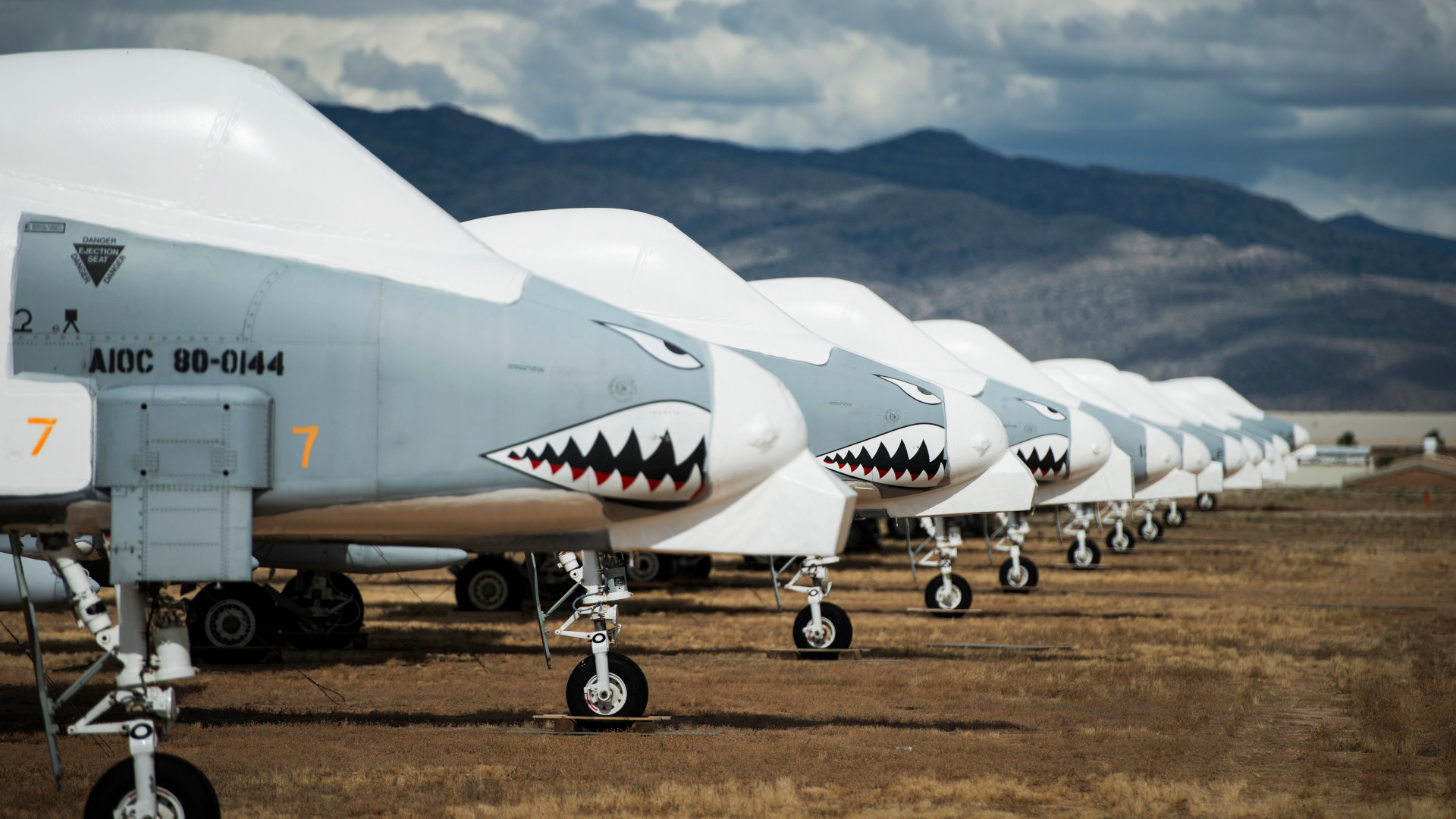The U.S. Air Force sent at least 39 A-10s to the boneyard at Davis-Monthan Air Force Base in Arizona this year, more than double the number of Warthogs it sent into mothballs in 2023. The service is pushing steadily ahead with plans to retire the type for good before the end of the decade, if not well before then, though the venerable ground attack aircraft continues to see combat in the interim.

Data on A-10 retirements are available on official monthly inventory reports from the 309th Aerospace Maintenance and Regeneration Group (AMARG), released between January and September. The 309th AMARG manages the boneyard and received 17 Warthogs in 2023. There were 50 A-10As and 107 A-10Cs in storage in total, many of which are in non-flyable condition, as of September 2024. How many additional A-10s may have headed into retirement in the past three months is unknown.

When Fiscal Year 2024 began on Oct. 1 of last year, there were 218 A-10s in service across the Air Force, according to separate data released back in March as part of the annual U.S. defense budget request rollout. The 39 Warthogs that went to the boneyard this year represent nearly 20% of that total. The Air Force currently plans to retire the last of the ground attack jets, which it argues have ever-more limited survivability and general utility, especially in any future high-end operations, such as a conflict in the Pacific against China, no later than 2030.
The Air Force only began retiring A-10s in earnest in 2023. For years, members of Congress had actively blocked the retirement of Warthogs, in part over questions about the ability of other aircraft, especially stealth F-35s, to fill in any potential gap in close air support capacity. Some of the debate to date has centered around the impending loss of the A-10’s famed seven-barrel 30mm GAU-8/A Avenger Gatling-type cannon. The internally-mounted 25mm cannon on the Air Force’s F-35As has also suffered serious issues over the years and whether or not they have been sufficiently resolved is unclear. At the same time, it is worth noting that the ground combat jets’ operations have steadily trended toward the employment of precision-guided munitions rather than strafing runs over the past two decades or so.

A report from the Pentagon’s Office of the Director of Test and Evaluation (DOT&E) on a controversial flyoff between the A-10 and the F-35, conducted between 2018 and 2019, only emerged this year in a highly redacted form after having been effectively buried. The independent Project on Government Oversight (POGO) only obtained that document, which is dated February 2022, through a Freedom of Information Act (FOIA) request and subsequent litigation. You can read more about the report, which raises more questions than it provides answers in many areas, here.
Regardless, the overall view of the A-10 in Congress has clearly shifted in recent years. The most recent annual defense policy bill for the 2025 Fiscal Year, which President Joe Biden signed into law earlier this month, includes a provision explicitly reducing the minimum number of Warthogs that the Air Force has to legally keep in operational service from 135 to 96.
The Air Force has already laid out extensive plans for a post-A-10 force structure across its active-duty components, as well as the Air Force Reserve and Air National Guard. Just in November, the service announced that the 25th Fighter Squadron at Osan Air Base in South Korea would start divesting its 24 Warthogs next month. What will happen to that squadron afterward and what additional aircraft might take their place at Osan is unclear.

Earlier this year, the Air Force formally decided that the Maryland Air National Guard’s 175th Wing would lose its Warthogs and gain a non-flying cyber operations mission in return. However, earlier this month, a separate administrative decision was also made to shift the District of Columbia Air National Guard’s F-16-equipped 121st Fighter Squadron to the Maryland Air National Guard.
Last year, the Air Force had also announced that the active-duty 23rd Wing at Moody Air Force Base in Georgia and Idaho Air National Guard’s 124th Fighter Wing at Gowen Field Air National Guard Base would be trading in their A-10s for F-35s and F-16s, respectively.
The face of Davis-Monthan Air Force Base, long itself an A-10 hub, is also set to change as a result of impending Warthog retirements. The base is slated to become home to an expanded 492nd Special Operations Wing flying OA-1K Sky Warden light attack aircraft and MC-130J Commando II special operations tanker/transports. The 492nd, which is currently based at Hurlburt Field in Florida, will support other non-flying Air Force special operations mission sets, as well.

This year was also the last season for the A-10C Demonstration Team, reducing the Warthog’s role in the Air Force’s recruitment and public relations efforts.

The Air Force’s remaining A-10s have continued to receive some of their most substantial upgrades in recent memory just in the past few years, including the ability to employ GBU-39/B Small Diameter Bombs (SDB). Many of the Warthogs still in service have also gotten new wings, adding thousands of flight hours to service lives.

Despite ongoing retirement efforts, A-10s are still flying combat missions. Warthogs were among the aircraft sent to the Middle East in October amid fears of further escalation in direct conflict between Israel and Iran and other crises in the region. Ground attack jets have since been actively used in recent weeks to conduct strikes in Syria amid new uncertainty in that country following the ouster of longtime dictator Bashar Al Assad.
There have been suggestions the A-10s could serve on with foreign air arms, including those of Jordan and Ukraine, after the U.S. Air Force retires the type for good. At least in the United States, the Warthog’s career is more and more firmly in its twilight period, especially with the ramping up of jets heading to the boneyard this year.
Contact the author: joe@twz.com
